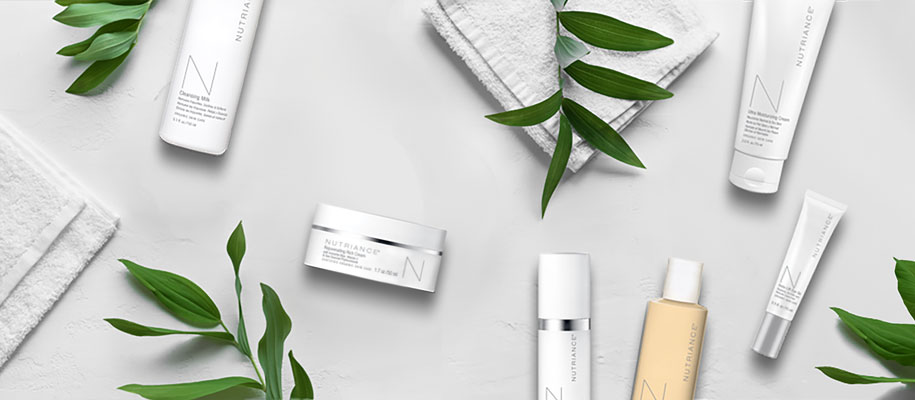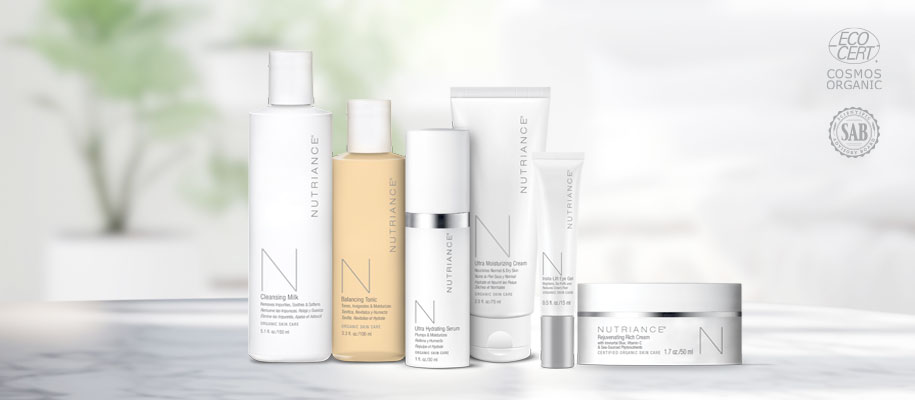The Future of Beauty & Personal Care is Clean and Green!
In our information-rich age we are increasingly knowledgeable about the benefits and potential harmful effects of the food we eat, the cosmetic products we use on our skin, and of course the cleaning products we use in our homes.1 We are seeking full transparency at every level, and rightly so!
It seems that interest in health and wellbeing is at an all-time high, but there has been a shift in focus. Today, it has been said that we care not just about “better for me,” but also, “better for we.” Almost everyone is thinking about the health of the planet as a priority when choosing a product to purchase. Environmental concerns and sustainability matter a lot! Simply said, we are looking for products that are both “Clean and Green.” In the cosmetics industry this movement has evolved from what was previously the “Natural and Organics category” and is considered to include more elements of sustainability, the environment and health of the planet.
The market figures show that Clean and Green cosmetics are experiencing a strong surge in all world regions, and this is predicted to continue for the next decade and beyond. The most rapid growth was seen in the organic products sub-category.2 According to Polaris market research the global market value for organic skincare is predicted to double from the 2021 figure to more than USD 20 billion by 2030.3 These impressive figures suggest that the demand for Clean and Green beauty and personal care products is here to stay. But what do these terms really mean? And which products can we trust?
Clean and Green: What do these terms mean for cosmetics?
“Clean beauty” is a term that is currently most used in the US compared to other parts of the world, but its use elsewhere is expanding. There is, however, no official definition. The term was originally coined to describe products which excluded potentially harmful ingredients, regardless of whether they were naturally derived or synthetic. This makes good sense as there are some naturally derived ingredients that may be harmful for the skin, and many synthetic ingredients that are beneficial.4 The term “Clean” has therefore been used to signify that ingredients are selected or differentiated based upon sound science to back ingredient safety and efficacy, and not simply their origin.
There are apparently as many as 50 different definitions for “Green products,” the majority of which have been developed by marketing professionals and driven by the strong business opportunity.5 It has become somewhat confusing to compare the “greenness” of products in the marketplace, as so many different labels have emerged.

“Green” beauty embraces sustainability, environmental concerns, and ethics at every level from ingredient sourcing, manufacturing processes, packaging, to clinical testing. This may mean that green chemistry methods for raw material extraction and production are used, that waste is upcycled or that less packaging is used. Green equates to eco-friendly production at every level.
There is no doubt that the Clean and Green cosmetic product category will become even more sought after in years to come, as we become increasingly aware of sustainability goals. But how can we find cosmetic products that are both Clean and Green? If they are not regulated, how can we trust that the products really are what they claim to be? And are these products also clinically proven? Look no further than NeoLife’s Nutriance Organic!
NeoLife Nutriance Organic: A breakthrough in Clean and Green
Certified Organic. Trusted. Proven Efficacy!
Back in 2018, NeoLife introduced the innovative facial care range Nutriance Organic selecting the internationally recognised Ecocert COSMOS-standard as the preferred Organic certification.7,8 COSMOS is an abbreviation for ‘COSMetic Organic and natural Standard’. Everything about the COSMOS standard is transparent, and signifies Clean and Green:
- Formulated without the following undesirable ingredients: Parabens, Phenoxyethanol, Nanoparticles, Silicon, PEG, Synthetic perfumes and dyes.
- A strict ban on the use of genetically modified organisms (GMOs) or products produced by GMOs.
- There is never any animal testing, either on ingredients or finished products.
- Commitment to biodiversity by supporting ingredients derived from organic agriculture were applicable, with adherence to standards for natural origin.
- Product ingredients, ingredient processing and product manufacture all use natural resources responsibly and with full respect for the environment and human health. In fact, the concept of green chemistry is integrated into COSMOS certifying guidelines.
Here Now. Right for the Future!
Packed with beneficial organic origin and naturally derived ingredients, yet scientifically formulated with great care, and clinically proven for safety and efficacy, the Nutriance Organic range is another clear example of NeoLife’s philosophy and commitment to the very highest standards in the industry.
BASED IN NATURE:BACKED BY SCIENCE.
References:
- Lowman M. NeoLife Blog. Published April 7, 2023. Accessed July 27, 2023. https://neolifeblog.com/2023/04/07/neolife-golden-home-care-leading-clean-ingredient-selection/.
- The clean beauty trend is more than skin deep. NielsenIQ. Accessed July 27, 2023. https://nielseniq.com/global/en/insights/education/2021/the-clean-beauty-trend-is-more-than-skin-deep/.
- Organic Skin Care Market Share, Size, Trends, Industry Analysis Report, By Consumer (Men, Women); By Distribution Channel (Supermarket/Hypermarket, Pharmacy & Drugstore, Online, Others); By Product; By Region; Segment Forecast, 2022 – 2030. Polaris Market Research. Accessed July 27, 2023. https://www.polarismarketresearch.com/industry-analysis/global-organic-skin-care-market.
- Turns A. Are ‘natural’ products better than synthetic ones? BBC Future. Published June 19, 2022. Accessed July 27, 2023. https://www.bbc.com/future/article/20220614-synthetic-or-natural-which-is-best-for-climate-and-health.
- Sdrolia E, Zarotiadis G. A comprehensive review for green product term: From definition to evaluation. J Econ Surv. 2018 ;33: 150–78. Doi: 10.1111/joes.12268.
- Green Chemistry. United States Environmental Protection Agency. Accessed July 27, 2023. https://www.epa.gov/greenchemistry.
- Ecocert. Accessed July 27, 2023. https://www.ecocert.com/en/business-sectors/cosmetics.
- About the COSMOS-standard, International Certifications for Cosmetics. COSMOS. Accessed July 27, 2023. https://www.cosmos-standard.org/en/cosmos-standard/.


